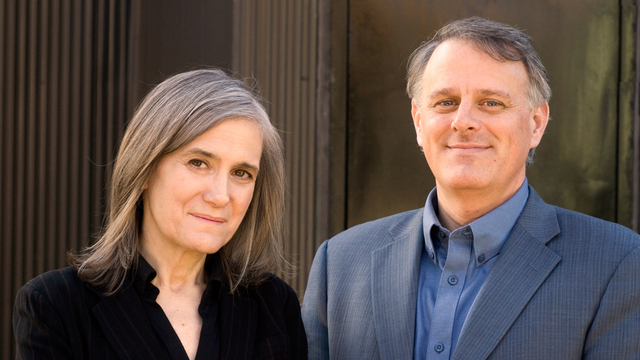
Topics
By Amy Goodman with Denis Moynihan
“Gitmo is going to remain open for the foreseeable future,” said an unnamed White House official to The Washington Post this week. For guidance on the notorious U.S. Navy base in Cuba, President Barack Obama should look to an old naval facility in Buenos Aires, Argentina.
When Ana Maria Careaga was 16 years old and pregnant, Argentine military thugs snatched her off the street, dragged her to a clandestine detention center and tortured her for four months. It was 1977, and a military dictatorship had just staged a coup in Argentina. Thirty thousand people were “disappeared” between 1976 and 1983 under the brutal junta. The junta enjoyed the enthusiastic support of Secretary of State Henry Kissinger, who is credited with authorizing a multigovernment terror network called “Operation Condor” that killed upward of 60,000 people across South America.
Decades later, Argentina has emerged from the dictatorship and risen from economic collapse as one of the new, progressive democracies of Latin America. Careaga, now 50 years old, is the director of the Instituto Espacio para la Memoria, the Institute of the Space for Memory, at the old Navy Mechanics School in the middle of Buenos Aires, where 5,000 prisoners were imprisoned, tortured and most later killed. The institute is committed to maintaining the memory of this dark chapter of Argentine history.
Ana feared she would lose her baby. Among the horrors she endured were repeated electric shocks with a cattle prod inside her vagina. While she was imprisoned, her mother, Esther Careaga, met with other mothers of children who had been disappeared. They gathered in the Plaza de Mayo, holding pictures of their missing children and walking in a circle to raise awareness, to protest and to gain international support against the violence and terror of the Argentine state.
After Ana was released and received political asylum in Switzerland, Esther Careaga did not stop marching in the Plaza de Mayo. I asked Ana why. She said: “When I was freed, my mother returned to the Mothers of the Plaza de Mayo. The others said, ‘Why are you here if you have already recovered your daughter?’ My mother said, ‘I will continue until all the disappeared appear, because all the disappeared are my children.’ ”
Esther Careaga and a group of other Mothers of the Plaza de Mayo and two French nuns were disappeared, taken to be tortured and killed, between Dec. 8-10, 1977. They were taken to the old Navy Mechanics School. With grim sophistication, the Argentine government drugged their tortured victims and piled their limp, yet living, bodies in planes. They were flown over coastal waters and dropped thousands of feet to their deaths. Unusual winds and tides washed Esther Careaga’s body, and several others, ashore, and they were ultimately identified.
Standing in the place where her mother was last alive in the torture center, Ana showed me a book with a redacted U.S. diplomatic memo obtained under the Freedom of Information Act, showing the U.S. embassy in Argentina knew that her mother had been killed and her body recovered, something Ana and her father did not learn for decades.
Now, the surviving victims themselves, and their reclaimed government, are trying—and in most cases convicting—many of the criminals (Kissinger has yet to be tried, and is said to be very careful when traveling internationally to avoid arrest). Ana is attending two trials simultaneously: On Mondays, Tuesdays and Wednesdays, she attends the trial of those who tortured and murdered her mother. For the rest of the week, in the same courtroom, she attends the trial of her own torturers. She serves as a living object lesson in the patient, disciplined pursuit of justice.
Which brings us back to Guantanamo. While the U.S. preaches to Cuba about its lack of democracy, maintaining an embargo against the country for decades, you would think it would set up a model of democracy on the piece of Cuba that the U.S. controls. Instead, it has formed a globally reviled concentration camp there, a Kafkaesque land beyond the reach of law. About 180 men are now interned at Guantanamo Bay, with diminishing prospects of a day in any real court, for years subjected to interrogations and to extended isolation that is both legally and actually torture. President Obama promised to close the prison camp. Congress now is unlikely to fund any Guantanamo shutdown and prisoner transfer, leaving the president shackled to Guantanamo, consigning the prisoners there to indefinite detention and despair, and deepening the disgust with which many in the world view the U.S.
Ana Maria Careaga is a torture survivor who goes to work in the very facility where her mother was tortured and spent her final hours. Her advice for President Obama is simple: “Close Guantanamo.”
Amy Goodman is the host of “Democracy Now!,” an independent, daily global TV/radio news hour airing on more than 950 stations in the United States and around the world. She is the author of “Breaking the Sound Barrier,” recently released in paperback and now a New York Times best-seller.
© 2011 Amy Goodman












Media Options